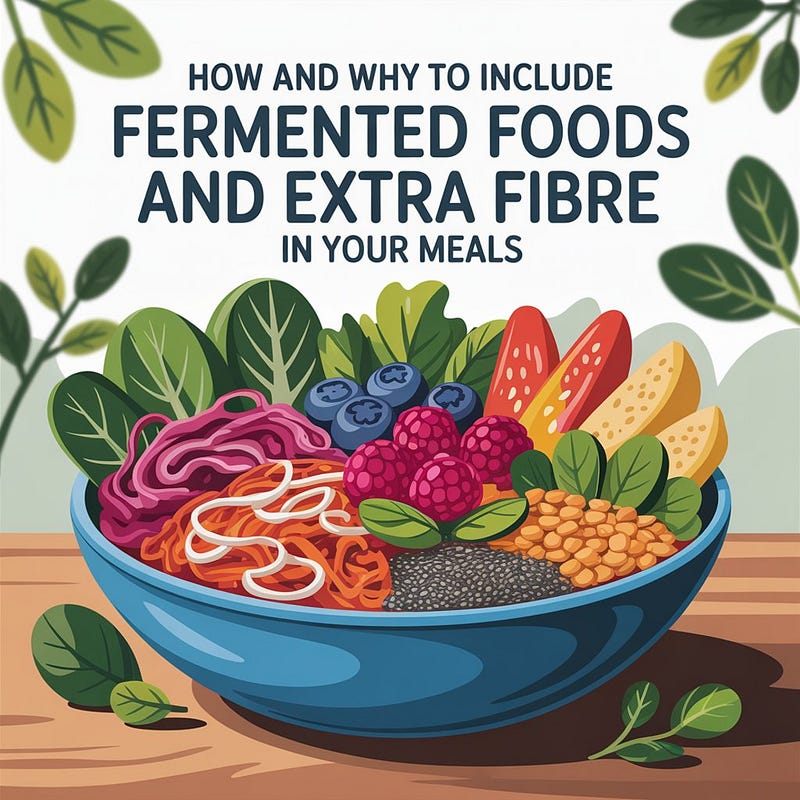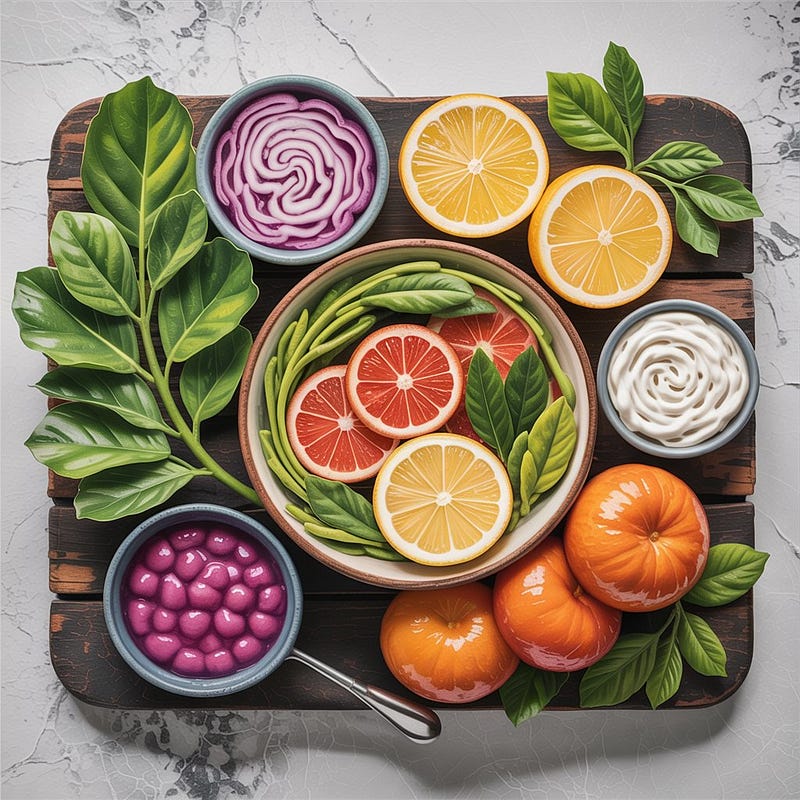How and why to include fermented foods and extra fibre in your meals.

Fermented foods and fibre support the gut microbiota, which improves mood and overall health.
An F can indicate academic failure, but it’s a good letter for your diet. In addition to being important for maintaining a healthy digestive system, the two key dietary Fs — fibre and fermented foods — may provide much more. How can these nutrients be incorporated into meals? Can this improve both your gut health and general health?
The gut microbiota, fermented foods, and fibre
The bacteria, viruses, fungi, and other microorganisms that reside in the colon (large intestine) make up the gut microbiome. The composition of the gut microbiome is influenced by a variety of factors, including your diet, living conditions, and the air you breathe. Because it contributes to many vital bodily processes, including immune system function, chronic inflammation reduction, intestinal cell health, and the provision of certain vital micronutrients that may not be found in a typical diet, some experts consider it a hidden organ.
Through channels in the gut-brain axis, your gut and brain can communicate. Mood and mental health conditions, including anxiety and sadness, have been connected to changes in the gut microbiota. It’s unclear yet, though, if these changes are the direct source of these issues.
We are aware that maintaining a healthy gut microbiome requires a diet low in processed foods. Additionally, there is growing evidence that fermented foods and fibre may be significant factors in this regard.
The Fibre 101
Fibre’s primary function is to facilitate easier digestion by softening and boosting stool volume, which speeds its passage through the intestines.
However, fibre offers additional advantages for your general health and microbiome. A diet rich in fibre reduces LDL (bad) cholesterol and aids in controlling body weight. Eating adequate fibre lowers the risk of heart disease, type 2 diabetes, and some types of cancer, according to research.
Facts regarding fibre
Fibre comes in two varieties: soluble (which lowers blood sugar and cholesterol) and insoluble (which promotes regular bowel motions and helps you feel full). Recent studies, however, indicate that rather than concentrating on the kind of fibre, people should pay attention to the overall amount of fibre in their diet.
Drink lots of water and gradually introduce new fibre-rich habits if you’re seeking to increase the amount of fibre in your diet. To prevent gas, bloating, diarrhoea, and stomach pains brought on by eating too much too fast, your digestive system must gradually adjust. After about a week, your body will gradually become used to consuming more fibre.
What is your required amount of fibre?
There are 14 grams of fibre for every 1,000 calories. Your degree of activity can affect how many calories you consume.
Which foods have a lot of fibre?
Fibre-rich foods include fruits, vegetables, whole grains, legumes, nuts, and seeds. A detailed list of foods high in fibre and their calorie values may be found in the Dietary Guidelines for Americans.
What about fibre supplements that are available over-the-counter as chewable pills, powders that you may combine with water, and capsules? “If you have trouble eating enough fibre-rich foods, then these occasionally can be used, and there is no evidence they are harmful,” Rimm states. “But they should not serve as your primary source of dietary fibre.”
101 fermented foods
Both probiotics — beneficial living bacteria — and prebiotics — ingredients that produce positive changes in the microbiome — are found in fermented meals. Probiotics and prebiotics both support a balanced gut flora.
Facts regarding fermented foods
A healthy gut helps your immune system fight infections and prevent inflammation in addition to aiding in digestion and the absorption of essential nutrients from food. Though not all specialists agree, some data indicates that specific probiotics may help reduce the symptoms of gut-related diseases such as irritable bowel syndrome and inflammatory bowel disease.
A lot of fermented foods go through a process called lacto-fermentation, where natural bacteria produce lactic acid by feeding on the food’s sugar and starch. In addition to eliminating simple carbohydrates, this process produces a variety of beneficial bacterial species, including Bifidobacterium and Lactobacillus. (Remember that certain foods go through processes like baking and canning that render probiotics and other beneficial microorganisms inert or eliminate them, such in the case of wine or beer.)
Depending on how they are produced, fermented foods contain different numbers and kinds of bacteria. Fermented foods may also have additional beneficial elements such as omega-3 fatty acids, B vitamins, and enzymes in addition to probiotics.
How frequently should fermented foods be consumed?
It is impossible to determine exactly which fermented foods or amounts are optimal because there is no recommended daily requirement for probiotics or prebiotics. Adding more to your regular diet is the basic rule.
Which foods should you choose that are fermented?
Because of the specific bacteria that are introduced to foods or produced during fermentation, fermented foods have a variety of flavours and textures. One of the most widely consumed fermented foods is yoghurt; search for the phrase “live and active cultures” on the label. If you prefer fermented foods or are not a fan of yoghurt, there are still plenty of options available. Examples include pickles, kombucha, sauerkraut, and kimchi.

Probiotics are sold as over-the-counter vitamins, just like fibre. However, there is no assurance that the kinds of bacteria indicated on a label can deliver the promised benefits — or even be in the bottle — because, like other dietary supplements, they are exempt from FDA approval. “Therefore, it is best to get your probiotics from fermented foods,” Rimm explains.

0 Comments